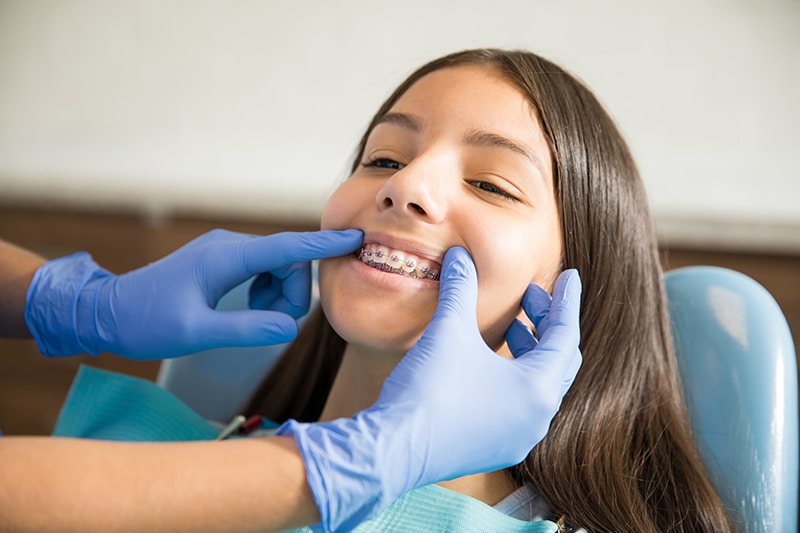SURGICAL ORTHODONTICS
Improve Your Chewing, Breathing and Speech Capabilities
Surgical orthodontics, also known as orthognathic surgery, is performed to alleviate severe bite problems or facial esthetic concerns that cannot be fully corrected with braces alone. Surgical orthodontics is performed in cooperation with the orthodontist, this surgery may improve your chewing, breathing and speech capabilities, and facial appearance. Orthognathic surgery is a carefully planned procedure and is only offered to patients whose jaw bone has stopped growing. Typically, jaw growth stops around age 18. There are many factors considered during corrective jaw surgery; however, the primary focuses are to create an ideal bite where the teeth fit together in occlusion and a properly functioning jaw.

HOW DOES SURGICAL ORTHODONTICS WORK?
A patient wears braces until the teeth are in the correct position for surgery. As the braces move the teeth, it may feel as though the bite is getting worse rather than improving. Surgical orthodontics is used to reposition the jaws so the teeth will properly fit into a good bite. Orthognathic surgery is performed by an oral and maxillofacial surgeon in a hospital.
TYPES OF ORTHOGNATHIC SURGERY
- Lower jaw surgery requires separating the jawbone behind the teeth and moving the tooth-bearing portion of the jawbone backward or forward as needed.
- In upper jaw surgery, the jaw can be lowered, raised, expanded or repositioned backward or forward. Specific movements may require the jaws to be separated, with bone added or removed to achieve proper alignment and stability. Other facial bones that contribute to alignment may also be augmented or repositioned.
Some conditions that may require surgical orthodontics include:
- Facial dysfunction causing ongoing jaw pain (TMJ) and headaches
- Excessive wear of the teeth
- Swallowing problems
- Asymmetrical facial appearance, skeletal disharmony
- Open bite
- Birth defects
- Facial injury or injury to the jaw during growth
- Severely protruding or receding jaw
- Inability to properly chew food
Recovery Time
- One to two weeks to return to school or work after surgery
- Six to eight weeks for the jaws to completely heal.
What Happens After Surgery
After completely healed, your doctor will continue to adjust your braces until your bite correction is ideal. Braces are usually removed within six to twelve months after surgery. Once the braces are removed, a retainer is worn to maintain proper alignment.
Crafting Your Best Smile
REQUEST YOUR COMPLIMENTARY CONSULTATION
*No Referral Necessary
Are you a new patient? You don’t need a referral to schedule an appointment with us! Fill out our easy online form below to request your complimentary orthodontic consultation at Tomblyn Family Orthodontics. We can’t wait to help you achieve a beautiful, healthy smile!





